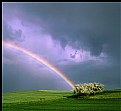|
|
 Rick Smith
Rick Smith
 {K:5490} 4/2/2007
{K:5490} 4/2/2007
|
Thank you Susie...its by a famous architect
Rick
|
|
|
|
Susie Peek-Swint
 {K:7303} 4/2/2007
{K:7303} 4/2/2007
|
Wow ~ I love the lines, colours, and perspective Rick ~ interesting sculpture (?)
regards, susie
|
|
|
|
 Rick Smith
Rick Smith
 {K:5490} 3/13/2007
{K:5490} 3/13/2007
|
Hey James, thanks for tell me. Here's the info"
For those of you who have ventured downtown, Pershing Square may have been a place you've driven past, walked through, or even sat down at, but the next time you decide to just pass it by, I'd encourage you to stop and check it out. Believe it or not, there are many aspects of Pershing Square that speaks to the history and culture of Los Angeles and California.
First a little background. Pershing Square was named after General John Pershing, who was the commander of the American forces overseas during World War 1. The current design was done by Mexican architect, Ricardo Legorretta and landscape architect Laurie Olin in 1994. See, I wasn't kidding when I said just a little background.
Once you step into Pershing Square, walk towards the middle and do a slow 180-degree turn. What you'll see is an amazing array of LA's architectural history in one full swoop. There's the the Beaux-Arts style of the Biltmore Hotel. Art Deco style is represented by the Title Guarantee and Trust Building. In present-day Los Angeles, the Corporate Modern style of the Gas Building is more prevalent. All this for your viewing pleasure.
The Square itself is divided into two distinct areas with the upper square consisting of a grassy area that becomes an amphitheater for summer concerts, but it's the lower square that actually has all the action.
Ricardo Legorretta's Mexican heritage carries into the layout of the lower square which represents a Mexican plaza. Considering California's history with Mexico, this is very much in keeping with L.A. cultural history. Like most Mexican plazas, the area is open, allowing for both foot traffic as well as places where you can sit down and relax.
Most Mexican plazas have Churches with their towering bell towers. The bell tower in this case is represented by the tallest structure in the lower plaza. You can't miss it. It's 125 feet high, purple with a red ball showing through a square opening towards the top.
Connected to the bell tower closer to the ground is a purple wall with square cutouts that act as picture frames for the park views. Hidden towards the top and within the wall is a pipe that gushes water into a circular pool that is lined with black pebbles. That hidden pipe is a reminder of how Southern California's water resources come from a series of aqueducts.
Even the circular pool tells a story. The fact that pool slowly fills and drains is reminiscent of our state's many tidal beaches. If you happen to come by on St. Patrick's Day, you might very well even see leprechauns dancing around a pool of water that miraculously has turned several shades of shamrock green.
At the edge of the pool towards the corner of 6th street and Olive, you can walk along a jagged path of gray quartzite that by its appearance reminds us that we live above a series of earthquake faults.
Parallel to the aqueducts, there is a path of scattered blue stars that brings to mind the Hollywood walk of fame, but look closer and you'll see the name of the stars written in Arabic.
After the stars, and before the earthquake fault, there are miniature orange trees that speak to both the citrus groves that dot the California landscape as well as our strong citrus industry.
As you finally walk away from Pershing Square, be sure to follow the quartzite earthquake fault line to the corner of the square, turn around and read the inscription of one of the walls that surrounds the park. It starts off with " My feeling about this weirdly inflated village in which I had come to make my home..." If you'd like to read the rest of it, I guess you better make a trip to Pershing Square.
Hopefully, in reading this, you'll get a fresh perspective of Pershing Square. It's really more than just a park. In its own quiet way, it tells a story and it's only by looking at it with fresh eyes that you can learn more One thing I've definitely learned for sure is that sometimes a gray jagged quartzite path is actually more than just a gray jagged quartzite path.
|
|
|
|
 James Cook
{K:38068} 3/13/2007
James Cook
{K:38068} 3/13/2007
|
Isn't this by Legorreta? I love his work.
|
|
|
|
 txules .
txules .
 {K:62768} 3/13/2007
{K:62768} 3/13/2007
|
i think this would work even better wiithout the buildings, it could be a wonderful abstract; on the other hand the buildings set a nice place for comparison. Beautiful anyway...txules
|
|
|
|
|
Mark Drago
{K:10902} 3/13/2007
|
well done Rick. night even try a slight crop.
|
|
|
|
 Rick Smith
Rick Smith
 {K:5490} 3/13/2007
{K:5490} 3/13/2007
|
Thank you Susan so very much
Rick
|
|
|
|
 Howie Mudge
{K:27933} 3/13/2007
Howie Mudge
{K:27933} 3/13/2007
|
I really like this piece of architecture and very well composed Rick. Nice work.
|
|
|
|
 SUSAN O'BRIEN
{K:384} 3/13/2007
SUSAN O'BRIEN
{K:384} 3/13/2007
|
Amazing architecture, superbly captured!
|
|
|
|
 Rick Smith
Rick Smith
 {K:5490} 3/13/2007
{K:5490} 3/13/2007
|
Felipe
Thank you so very much
Rick
|
|
|
|
|
Felipe Soriano
{K:615} 3/13/2007
|
Legorreta's Architecture and Color Style ...
Excellent picture !!!
|
|
















